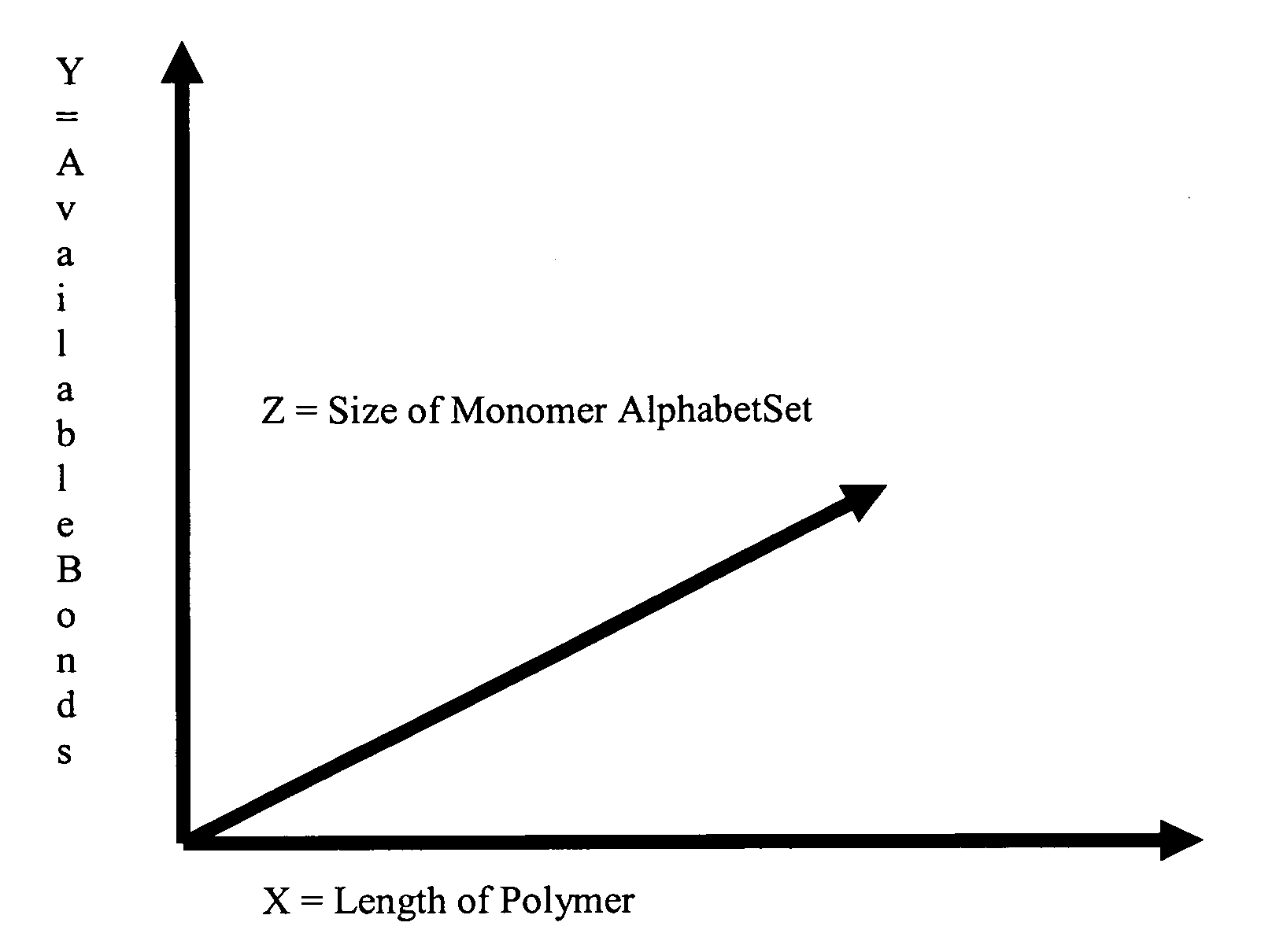Methods of making nanotechnological and macromolecular biomimetic structures
- Summary
- Abstract
- Description
- Claims
- Application Information
AI Technical Summary
Benefits of technology
Problems solved by technology
Method used
Image
Examples
example 1
[0163] The example method described previously can be used to generate novel proteins using the peptide bond in host cells which do not ordinarily synthesize these proteins. Some of the key components for creating a dual mode in vivo system for creating these novel proteins are summarized in Table 3.
TABLE 3Base Example of PolypeptidePropertyValueBondPeptideMonomer SetAbout 20 (all amino acids)Codon Length3Substrate Viability CompatibilityTotalActive Site KnownYesSimilar Synthetic Enzymes KnownNoDegradative Enzymes KnownYes (e.g., chymotrypsin)Restrictive Leader ClassType 0 (base, i.e. none)tRNA Possible for SubstratesYesTunnel Rework RequiredNoProduct Viability CompatibilityYes (Exceptions: various naturaltoxins)
example 2
[0164] The following describes a process which can be used to design a method of producing cellulose using the present invention. The designations of first, second, etc. are provided for organizational purposes only. As one of skill in the art will recognize, most steps can be performed in any order to design the production method described below.
[0165] First, researchers identify the bond needed to synthesize the DEP desired, for example the glycoside bond used in cellulose. Second, changes needed in the structure and function of the ribosomal active site are identified to produce a similar but reverse direction catalytic mechanism based on examining the reaction of a hydrolyzing enzyme such as Kor cellulase.
[0166] Third, for this example, the tRNAs used will incorporate a codon system of 3 nucleotides because this particular DEP does not require linking a vast number of different substrates but instead is composed of simple sugars only, e.g., β-D-Glucose. While a cellu...
example 3
Polylactic Acid (PLA)
[0173] The example method described previously can be used to generate PLA in host cells which do not ordinarily synthesize PLA. Some of the key components for creating a dual mode in vivo system for creating PLA are summarized in Table 5.
TABLE 5Example of PLAPropertyValueBondAnyMonomer Set1Codon Length1 to 20Substrate Viability CompatibilityYesActive Site KnownNoSimilar Synthetic Enzymes KnownYesDegradative Enzymes KnownYesRestrictive Leader ClassType ItRNA Possible for SubstratesYesTunnel Rework RequiredYesProduct Viability CompatibilityNot available
PUM
| Property | Measurement | Unit |
|---|---|---|
| Structure | aaaaa | aaaaa |
Abstract
Description
Claims
Application Information
 Login to View More
Login to View More - R&D
- Intellectual Property
- Life Sciences
- Materials
- Tech Scout
- Unparalleled Data Quality
- Higher Quality Content
- 60% Fewer Hallucinations
Browse by: Latest US Patents, China's latest patents, Technical Efficacy Thesaurus, Application Domain, Technology Topic, Popular Technical Reports.
© 2025 PatSnap. All rights reserved.Legal|Privacy policy|Modern Slavery Act Transparency Statement|Sitemap|About US| Contact US: help@patsnap.com



